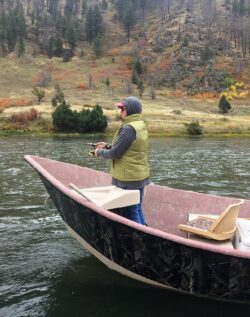Spring runoff is near. This means that the mountain snow will begin to melt and flood our streams and rivers. Lakes will begin to also fill. The boat ramp at Silo’s, on Canyon Ferry, is high and dry except for a couple shallow feet at its end. The Mighty Mo needs to bring some relief soon.
High water does not mean poor fishing. Fish feed more readily during high water conditions. The water becomes off color and fish are less wary. Fishing will peak when the water begins to clear and is ready to drop off.  
Feeding in high water is more difficult out in the main currents. Look for the fish to be closer to the shores and structure. It is in this slower and shallower water where food is being washed into the water. Worms, insects, grubs, crayfish, and other food will be found. Smaller fish also congregate in the shallower water. Predators can pig out in a hurry.
When fishing high and off-color water, consider noisy, stinky, flashy, and trashy lures, flies, and baits. Since water clarity is low, you need to get the fish’s attention. Fish slower and deeper. Try using spinners and lures that make vibrations and noise. Large, shiny spinners will attract and reflect more light. Once the fish see the lure or bait, strikes often come hard and fast.
Generally, headwaters clear first. If lower waters are muddy, you can often hike up upstream and discover clarity and hungry fish. Fishing is best as the water just begins to clear and drop.
Good polaroid glasses are helpful for all fishing. Not only do they help you see better, but they also protect your eyes from hooks, sticks, and debris. You may not see the entire fish but Polaroid lenses help cut the glare so you can see deeper.
You can use heavier lines in high and off-color water. Fish are unable to see most lines when the water is cloudy and moving fast. Bigger rods also allow you to handle fish in stronger currents. Make sure that you adjust your reels drag to help you play the bigger fish you are likely to encounter.
Higher waters can be the perfect time to float or drift fish in a boat. You can position the boat to cast into the back eddy’s and behind rocks and snags where big fish are waiting to ambush food. When you are floating at the same speed as the water, you eliminate drag. Your presentation will be more natural, slower, and deeper. Some drifters will drag a chain off the stern to slow their drift and keep the boat parallel to the shore. Wear a life vest just in case.
Plan to fish when the water is in the rivers!
Montana Grant